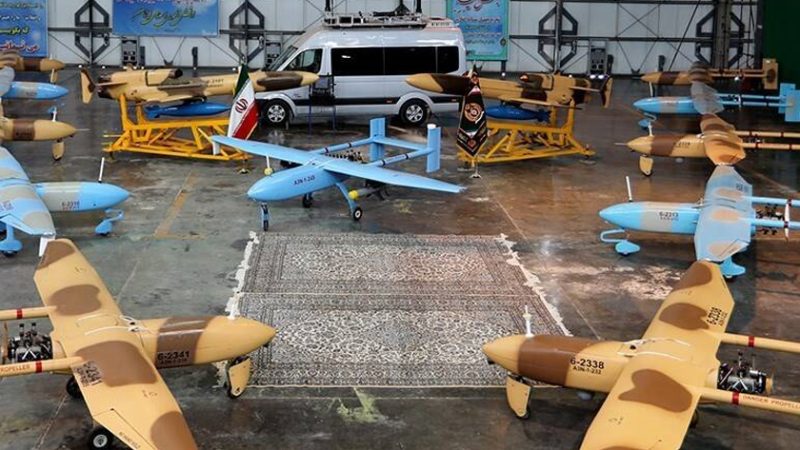On 11 October 2025, a drone strike by Sudan’s Rapid Support Forces (RSF) tore through a displacement shelter at Dar al-Arqam, part of Omdurman Islamic University in El Fasher, North Darfur, killing at least 57 people, including 22 women and 17 children. According to witnesses and activists, the drone attack was followed by heavy artillery fire that ripped through the already war-torn city.
This single strike is just one in a series of drone attacks that signal how drones have transformed the Sudan civil war. Once a peripheral technology, Drones have become central to the RSF’s campaign and to the Sudanese Armed Forces’ counterattacks. The conflict, which began in April 2023 as a power struggle between two generals, has since descended into one of the world’s most devastating humanitarian crises. Tens of thousands have died, millions have fled, and cities like Khartoum and El Fasher have become battlefields of both ground and air.
Early in the war, fighting was dominated by ground combat: sieges, artillery, and urban destruction. But over time, both sides turned to drone warfare for an edge. The RSF in particular began using drones not only for reconnaissance but also for precision, or, as often in Sudan’s case, indiscriminate strikes on civilians and infrastructure. In January 2025, a drone hit the Saudi Maternal Teaching Hospital in El Fasher, killing more than 70 people, according to the World Health Organization. Other strikes have targeted power plants, water stations, and even marketplaces.
In January of this year, a series of drone attacks crippled Sudan’s electricity grid, knocking out power in major army-held regions after drones struck substations and the Merowe Dam. Hospitals lost refrigeration, causing medicine and food supplies to spoil, deepening the suffering for millions already displaced. Later, in May 2025, drone strikes hit airports and fuel depots in Kassala and Port Sudan. These incidents reveal how drones have shifted from experimental weapons to tools of control and terror.
The New Logic of the War
The appeal of drones is clear in many conflicts around the world: they allow remote attacks without risking soldiers’ lives. In Sudan, however, this technological advantage has come at immense human cost. The supposed “precision” of drones is undermined by how they are used. In El Fasher and elsewhere, the RSF has repeatedly bombed shelters, hospitals, and mosques, claiming to target military positions. In reality, these attacks leave civilians dead and displaced. A United Nations report noted that a drone strike hit a mosque during prayers, killing 11 children.
These strikes deny civilians any sense of safety. For people living in besieged zones like El Fasher, there is no refuge. Many families have dug crude bunkers beside their homes to escape aerial bombardment. This strategy of “siege from the air” has turned El Fasher into a city of ghosts. Once home to more than a million people, its population has fallen sharply. Food markets have collapsed, and people survive on animal feed or scavenged waste. Humanitarian agencies are blocked from entry by what residents call the “berm,” a 57-kilometer earthen wall surrounding the city, erected by RSF forces to control movement and starve resistance.
The Expanding Reach of Drones
Beyond their immediate impact, drones have changed how both sides wage war across Sudan. The RSF’s use of drones for infrastructure attacks, like the Merowe Dam and regional power plants, has turned basic services into targets. By cutting power or water, the RSF can cripple entire cities, weaken the army’s grip, and spread panic. This new form of “infrastructure warfare” has multiplied the humanitarian consequences of every attack.
Moreover, the proliferation of advanced drones and surface-to-air missiles in Sudan points to a dangerous international dimension. A recent Washington Post investigation revealed that RSF forces possess drones similar to those used by Houthi rebels in Yemen, as well as Chinese-made FK-2000 anti-air systems, likely supplied through regional intermediaries such as the United Arab Emirates, Turkey, or Iran. This influx of advanced weaponry has intensified the conflict and risks spreading instability across the Sahel.
For ordinary Sudanese, drones have made the war feel omnipresent. They no longer need to see soldiers to know they are in danger. The hum of a drone overhead can send entire neighborhoods running. Hospitals, supposed safe zones, have become death traps. In Obeid, a suspected drone strike killed six people and forced the city’s main hospital to close. In El Fasher, residents described rescuing bodies from the ruins of their own homes. Aid groups report that hundreds of thousands are trapped without food, electricity, or medical care.
Despite this devastation, accountability remains elusive. Both sides deny responsibility for civilian deaths, and international investigators struggle to confirm which faction launched specific strikes. The International Criminal Court has opened inquiries into possible war crimes, but drones complicate matters; strikes can be launched remotely, data can be erased, and evidence can vanish within minutes.
The Need for International Action
Sudan’s drone war reveals how easily new technology can deepen old violence. What was once a political power struggle has turned into a high-tech siege where civilians are the primary targets. The international community faces a clear test. Without stricter enforcement of arms embargoes, drones and their components will continue to flow into the country. Many of these systems are commercially available, easily smuggled, and often reassembled from parts sold online.
Monitoring and accountability must also adapt. Satellite imagery, forensic analysis, and open-source intelligence have already helped track some attacks. Supporting these efforts could help build evidence for future war-crime prosecutions. But justice will remain distant without stronger diplomatic engagement. Humanitarian corridors, temporary ceasefires, or even locally negotiated no-fly zones could save lives, but these require political will and international leverage.
Ultimately, no drone strike, no air campaign, can resolve the deep divisions tearing Sudan apart. Military dominance from the air might win ground, but it cannot rebuild trust or governance. As the skies over Sudan fill with machines of death, the human cost continues to rise, and the world’s silence grows heavier.
Source: https://www.geopoliticalmonitor.com/drone-warfare-over-sudan-the-siege-from-the-air/






